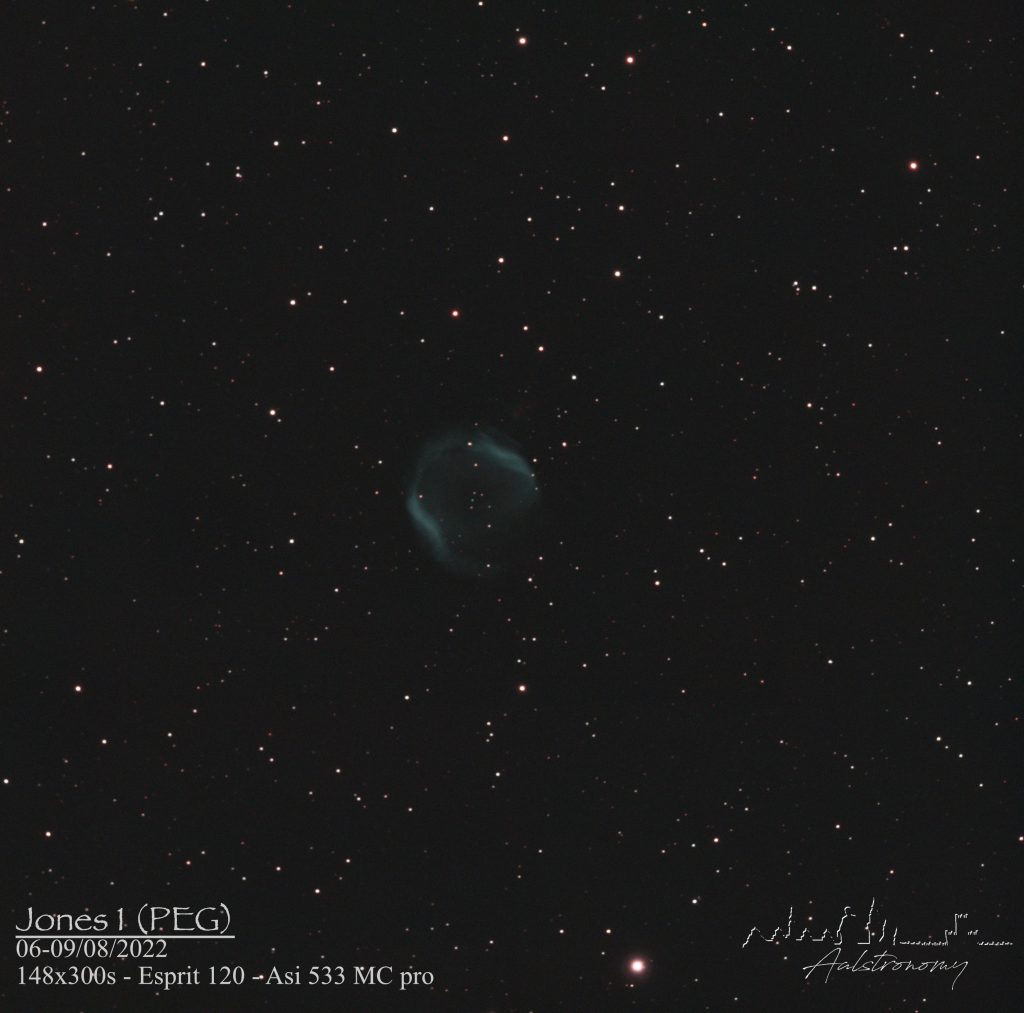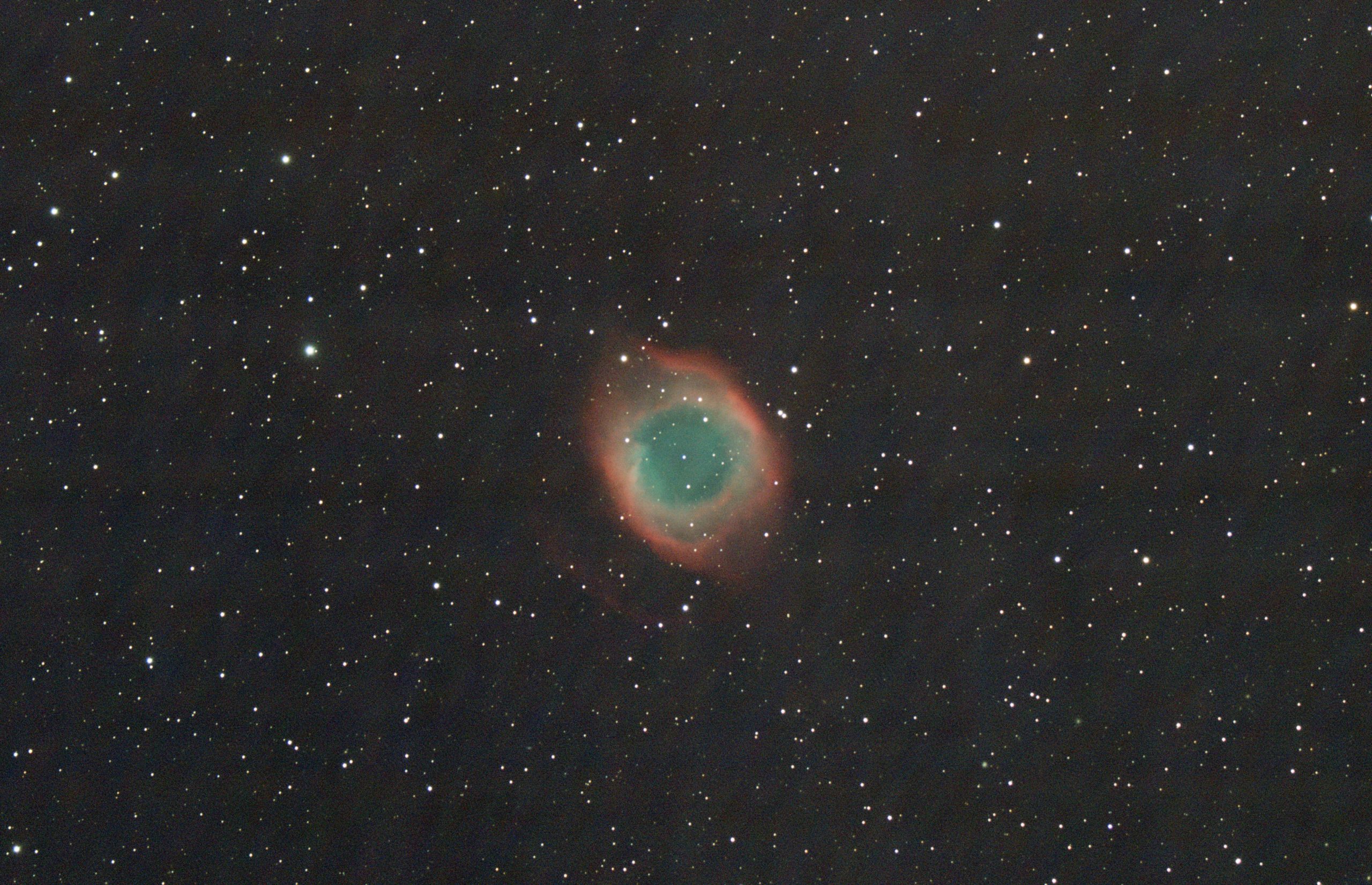
Finally getting back in the game, the nights are finally getting longer again, and with 2 hours of astro darkness per night, it is getting worth putting in the time. Narrowband targets are a bit more forgiving, but need more than 1 night of integration time. Luckily, I had 3 clearish nights in a row, before the moon got too bright. Enjoy!
“PK104-29.1,” also known as “Jones-Emberson 1” or “JnE 1,” is a well-known planetary nebula located in the constellation Pegasus. This nebula is a captivating celestial object that showcases the intricate processes of stellar evolution.
Jones-Emberson 1: PK104-29.1, often referred to as Jones-Emberson 1, is a planetary nebula that has been assigned the catalog number PK104-29.1. It’s a relatively young nebula in cosmic terms, with an estimated age of around 2,300 years.
Planetary Nebula Beauty: Planetary nebulae like Jones-Emberson 1 are formed when a dying star sheds its outer layers, creating a glowing shell of gas and dust. These shells can take on a variety of shapes and patterns, often resembling cosmic works of art.
Celestial Transformation: Jones-Emberson 1’s central star, which remains after the outer layers have been expelled, is a white dwarf—a compact remnant of what was once a much larger star. This central star emits intense ultraviolet radiation that causes the surrounding gas to fluoresce and emit colorful light.
Stargazing Delight: Observing planetary nebulae like Jones-Emberson 1 through telescopes allows astronomers to study the late stages of stellar evolution and gain insights into the mechanisms by which stars enrich the cosmos with heavy elements.









